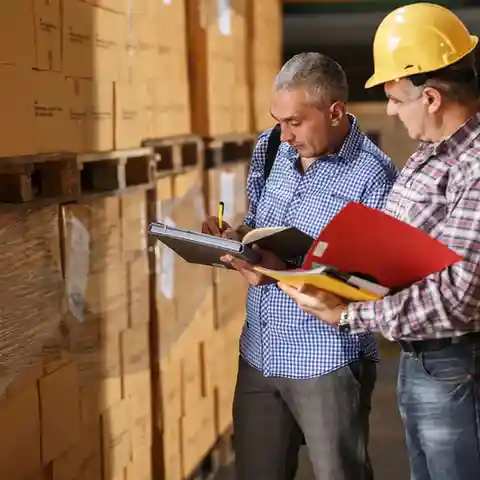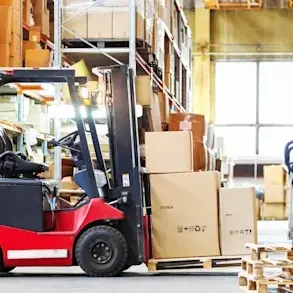Navigating Customs Clearance: Essential Steps For Successful International Trade
A Journey Through Global Trade
Imagine a bustling port where ships from around the world dock, laden with goods destined for global markets. Amid the controlled chaos, there’s an invisible process at work—customs clearance. This crucial step in international trade determines whether goods smoothly transition from ship to shelf or face delays and complications.
For businesses, mastering customs clearance is akin to navigating a complex maze, where understanding regulations, documentation, and compliance is essential for success. Join us as we explore the essential steps for navigating customs clearance, and ensuring your goods reach their destination efficiently and without hassle.
The Fundamentals of Customs Clearance
1. Understanding Customs Regulations
Customs regulations vary widely across countries and are critical to the clearance process:
- Regulatory Compliance: Understanding import and export regulations is pivotal for international trade success. Compliance with each country's rules averts penalties and shipment setbacks. Diligent adherence to regulations ensures smooth customs clearance, preventing costly fines and delays that could compromise business operations and customer satisfaction.
- Harmonized System (HS) Code: Precise classification of goods using the Harmonized System (HS) code is essential for determining relevant duties and taxes. Proper classification streamlines customs procedures, minimizes errors, and ensures compliance with trade regulations. Accurate HS code application facilitates efficient international trade operations, preventing delays and financial penalties.
2. Preparing Accurate Documentation
Proper documentation is the backbone of a smooth customs clearance process:
- Commercial Invoice: This document provides details about the goods, including value, quantity, and description. Accurate invoicing is essential for calculating duties and taxes.
- Bill of Lading: A legal document between the shipper and carrier detailing the type, quantity, and destination of the goods.
- Packing List: Provides detailed information about the shipment, including weight, dimensions, and packaging type.
3. Engaging a Customs Broker
A customs broker can be invaluable in navigating the complexities of customs clearance:
- Expertise and Experience: Brokers offer expertise in customs regulations, managing documentation and compliance for you. Their proficiency streamlines import/export processes, ensuring adherence to regulations and minimizing risks of errors or delays. Entrusting these tasks to brokers saves time and resources, allowing businesses to focus on core activities while ensuring seamless international trade operations.
- Cost Efficiency: Despite the associated fee, brokers provide invaluable assistance in averting expensive delays and penalties. Their expertise in customs procedures ensures smooth clearance, mitigating risks of non-compliance. By investing in broker services, businesses safeguard against potential financial losses, ensuring efficient and hassle-free international trade operations.
Enhancing Efficiency in Customs Clearance
1. Leveraging Technology
Technology plays a crucial role in streamlining customs clearance:
- Automated Customs Systems: Numerous countries provide electronic customs clearance systems, halving processing times by up to 50%. These streamlined platforms facilitate faster document submission, communication with customs authorities, and clearance procedures. Embracing electronic clearance expedites trade processes and enhances efficiency, reducing administrative burdens and promoting smoother international transactions.
- Blockchain Technology: Delivers a secure and transparent method for tracking shipments and verifying documentation, effectively curbing fraud and errors. Through real-time monitoring and authenticated data exchange, this system enhances trust and accountability across supply chains, ensuring accurate record-keeping and minimizing the risks associated with fraudulent activities or documentation inaccuracies.
2. Implementing Pre-Clearance Programs
Pre-clearance programs can expedite the customs process:
- Trusted Trader Programs: Participating in initiatives like the Authorized Economic Operator (AEO) program offers advantages such as accelerated clearance processes and decreased inspections. By demonstrating compliance with security and customs criteria, businesses gain trusted trader status, enjoying streamlined customs procedures that enhance efficiency and reduce the likelihood of delays or disruptions in international trade.
- Pre-Arrival Processing: Advance submission of documentation before shipment arrival can substantially diminish clearance durations. By proactively furnishing necessary paperwork, customs authorities can conduct pre-arrival assessments, expediting processing, and clearance procedures. This proactive approach minimizes delays, accelerates supply chain movement, and fosters smoother international trade operations.
Common Challenges and Solutions
Navigating customs clearance is not without its challenges:
- Compliance Issues: Misclassification of goods or erroneous documentation can result in delays and penalties. Ongoing training and staying abreast of customs regulations are vital to mitigate such risks. By ensuring staff are well-informed and updated, businesses can uphold compliance, minimize errors, and maintain seamless customs clearance processes, avoiding costly setbacks.
- Communication Barriers: Language and terminology disparities can result in misunderstandings. Employing clear, concise, and standardized documentation mitigates these gaps. Consistent communication fosters mutual understanding between parties, streamlining processes, reducing errors, and facilitating smoother transactions, ultimately enhancing efficiency and reliability in international trade.
Conclusion: Mastering the Art of Customs Clearance
Successfully navigating customs clearance is essential for any business engaged in international trade. By understanding regulations, preparing accurate documentation, and leveraging technology, businesses can ensure a smooth and efficient customs process. Engaging a customs broker and participating in pre-clearance programs can further enhance efficiency, minimizing delays and reducing costs.
As global trade continues to expand, mastering customs clearance will remain a critical component of successful international trade. Equip your business with the knowledge and tools needed to navigate this complex process, and watch your international trade operations thrive.



